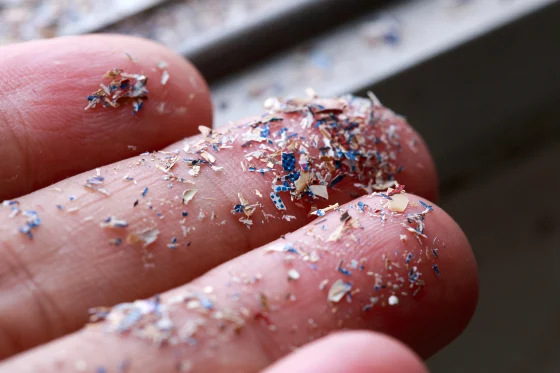
A recent study published in JAMA Network Open has uncovered microplastics in the brain tissue of cadavers, particularly within the olfactory bulb, which is responsible for processing smells. This research, conducted by scientists in Brazil, adds to the growing body of evidence that microplastics are present in various organs and systems within the human body.
Microplastics are tiny plastic particles, typically smaller than 5 millimeters, that have become pervasive in the environment. Previous studies have detected these pollutants in nearly every organ, the bloodstream, and even in arterial plaque. The potential for microplastics to infiltrate the human brain has raised significant concerns among researchers.
The Role of the Olfactory Bulb
The olfactory bulb consists of two structures located above each nasal cavity and is connected to the brain via the olfactory nerve. It plays a crucial role in detecting and processing smells. Researchers believe that the olfactory pathway could serve as a potential entry point for microplastics to access brain tissue, given its connection to the nasal cavity.
Dr. Thais Mauad, the lead author of the study and an associate professor of pathology at the University of São Paulo Medical School, noted the parallels between microplastics and other airborne pollutants, which have been shown to reach the brain through the olfactory system.
Brain Samples: Methodology of the Study
The research team analyzed samples from the olfactory bulb of 15 cadavers, aged between 33 and 100. Notably, eight of these samples contained microplastics, which ranged in size from 5.5 to 26.4 micrometers. A total of 16 plastic fibers and particles were identified, with polypropylene being the most common type found, followed by polyamide, nylon, and polyethylene vinyl acetate.
Dr. Mauad emphasized the ubiquity of polypropylene in everyday items such as furniture, rugs, and clothing, highlighting that indoor environments are primary sources of exposure to microplastics.
Matthew Campen, a toxicologist at the University of New Mexico, remarked on the findings, stating that while the presence of microplastics in the olfactory bulb is concerning, it is not entirely unexpected. He explained that the olfactory system is a pathway through which particles can enter the brain, noting that small airborne particles have previously been shown to reach this area.
Although the study did not specifically analyze nanoplastics—particles smaller than one micrometer—Campen suggested their presence might also be significant, given their potential ability to penetrate biological barriers.
Pathways to the Brain
The olfactory bulb connects the nose to the brain and detects odor molecules, which stimulate olfactory nerves. This pathway may also allow for the entry of other particles, including harmful organisms. However, Campen believes that nanoplastics are more likely to enter the brain through the bloodstream rather than via the olfactory bulb, as the blood-brain barrier poses significant challenges for particle entry.
The implications of microplastics for human health remain largely unexplored. Research is still in its infancy, and it is unclear whether these particles can cross the blood-brain barrier. While animal studies have indicated that microplastics can cause cognitive changes and may breach this barrier, human data is scarce.
Dr. Mary Johnson, an environmental health researcher at Harvard, emphasized the inflammatory reactions observed when cells are exposed to microplastics. She noted the potential connection between neurological diseases, such as dementia, and exposure to environmental pollutants, including microplastics.
Conclusion
The detection of microplastics in the olfactory bulb raises significant questions about their potential impact on human health, particularly concerning cognitive function and neurological diseases. As research continues to evolve, understanding the pathways and effects of microplastics in the body remains a critical area of study. The findings highlight the need for further investigation into how these pollutants interact with human biology and their long-term consequences on health.